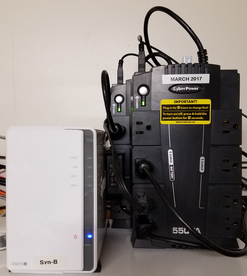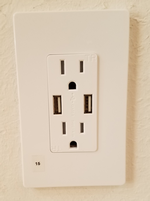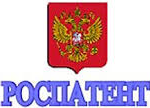Design Day 2017 is almost sold out. See my earlier blog post for information about Design Day 2017 and to see how to register. Only 34 seats remain open for this event.
Attend a trademark roundtable at the Denver patent office April 21
This is your opportunity to participate in a face-to-face AIPLA r oundtable with leaders from the trademark office at the USPTO. The free-of-charge roundtable will take place April 21 at the Denver patent office. A free breakfast will be provided by Oppedahl Patent Law Firm LLC. For more information, and to register, click here.
oundtable with leaders from the trademark office at the USPTO. The free-of-charge roundtable will take place April 21 at the Denver patent office. A free breakfast will be provided by Oppedahl Patent Law Firm LLC. For more information, and to register, click here.
Time of day returns to normal for US filers filing at the International Bureau
Readers will recall my blog post of two weeks ago in which I described that an American filer would (for a limited time of two weeks) have an extra hour during which to file a same-day filing at the IB. Well, now it’s back to normal. Now the drop-dead time for e-filing (or fax filing) is the usual 4PM (Mountain Time).
So for your PCT filing at the RO/IB, or your direct filing of a Hague Agreement design application, or your payment of a renewal for a Madrid Protocol international trademark registration, or an Article 19 amendment, or a PCT Demand … it’s back to normal.
Smarter battery backup communications nowadays

When I started my law firm (almost 25 years ago now), the connection from a UPS (uninterruptible power supply or “battery backup”) to a server was by means of a 9-pin RS-232 serial cable. The signals were simple binary values — power fail, low battery, and UPS shutdown.
Nowadays the connection from a UPS to a server is smarter, as I will describe. Continue reading “Smarter battery backup communications nowadays”
A home-improvement project — USB outlets
 Here’s a nice home-improvement project — installing some USB receptacles around the house. You’ve used outlets like this in hotels and airports. Why not enjoy the convenience of such outlets in your own home?
Here’s a nice home-improvement project — installing some USB receptacles around the house. You’ve used outlets like this in hotels and airports. Why not enjoy the convenience of such outlets in your own home?
A rainy-day project – labeling electrical outlets
 Here’s a fun rainy-day project for those visiting nieces and nephews – labeling the electrical outlets. A first person is stationed at the circuit breaker panel. A second person is roaming the house, carrying a label maker and a lamp. These people are using walkie-talkies, if needed, or better yet, if they have amateur radio licenses, ham radio handy-talkies. The lamp is plugged into an outlet and is turned on. The person at the circuit breaker panel switches off the breakers one by one until it is determined which circuit breaker powers the outlet. A label is printed and applied to the cover plate of the outlet. (For example in this case it is breaker number 15.) The process is repeated until every electrical outlet has been labeled.
Here’s a fun rainy-day project for those visiting nieces and nephews – labeling the electrical outlets. A first person is stationed at the circuit breaker panel. A second person is roaming the house, carrying a label maker and a lamp. These people are using walkie-talkies, if needed, or better yet, if they have amateur radio licenses, ham radio handy-talkies. The lamp is plugged into an outlet and is turned on. The person at the circuit breaker panel switches off the breakers one by one until it is determined which circuit breaker powers the outlet. A label is printed and applied to the cover plate of the outlet. (For example in this case it is breaker number 15.) The process is repeated until every electrical outlet has been labeled.
For extra credit, a third person can sketch a map of the house and the outlet locations plotted on the map. The map can then be posted next to the circuit breaker panel.
When the project is finished, everybody can make popcorn and watch a movie. A fun activity for the entire family!
USPTO thinks there is such a thing as a “provisional patent”?
 I guess probably a dozen times a day I go to the USPTO web site. I go to the home page, and then I click around until I find what I need (for example Private PAIR).
I guess probably a dozen times a day I go to the USPTO web site. I go to the home page, and then I click around until I find what I need (for example Private PAIR).
Now we all know there is no such thing as a “provisional patent”, right? Yes there is such a think as a “provisional patent application”. But there is no such thing as a “provisional patent:.
I just now noticed an astonishing thing about the main page of the USPTO. The home page of the USPTO invites the visitor to search for information on a “provisional patent”.
Continue reading “USPTO thinks there is such a thing as a “provisional patent”?”
Learning about “wifi calling”
 Today’s blog article is a “tech” article and it is a “trademarks” article. The main point of this blog article is that probably you should activate “wifi calling” on your mobile phone, if you have not already done so.
Today’s blog article is a “tech” article and it is a “trademarks” article. The main point of this blog article is that probably you should activate “wifi calling” on your mobile phone, if you have not already done so.
For most mobile telephone customers in the US, wifi calling has only been available for a few months. So a reader of this blog may be forgiven for having failed to activate this service before now.
What is wifi calling? Continue reading “Learning about “wifi calling””
ISA/RU search fee to increase on May 1
 For a US filer who is filing a PCT application and who is picking the Russian patent office, the search fee will increase on May 1, 2017. The search fee, presently $449, will increase to $482.
For a US filer who is filing a PCT application and who is picking the Russian patent office, the search fee will increase on May 1, 2017. The search fee, presently $449, will increase to $482.
If you rank ISAs in order by the size of the search fees, the Russian patent office will still be the least expensive searching authority available to US filers after May 1, just as it is now.
The formal name of the Russian patent office is Federal Service for Intellectual Property but the nickname is Rospatent. Which gives us an opportunity to brush up on our knowledge Cyrillic. As you can see in the logo at the upper right, in Cyrillic the “P” is what we English speakers would voice as an “r”. The “C” is what we would voice as an “s”. The Π (like a Greek letter π) is what we would voice as a “p”. And the “H” is what we would voice as an “n”.
Which brings me to a fun old classic mystery movie in which this Cyrillic H played a part. In the movie, a handkerchief is found with an “H” embroidered on it. This implicates a person whose name is pronounced starting with an “h”. But a clever person in the movie realizes that the “H” might be sounded as an “n”, implicating a person with a Russian name.
The first person to post a comment identifying this movie will win a super spiffy digital voltmeter from Oppedahl Patent Law Firm LLC.
Opportunities to learn about the Patent Cooperation Treaty
There are quite a few upcoming opportunities to learn about the Patent Cooperation Treaty:
- March 13, 2017 in San Francisco, California
- April 5-7, 2017 in Orlando, Florida
- June 8, 2017 in Minneapolis, Minnesota
- July 24-25, 2017 in Alexandria, Virginia
- September 21-22, 2017 in Cary, North Carolina
March 13, 2017 in San Francisco, California. This one-day program is sponsored by WIPO and by the PCT Learning Center. For more information, or to sign up, click here.
April 5-7, 2017 in Orlando, Florida. This program is two and a half days long. The program, entitled Comprehensive PCT Practice, is sponsored by WIPO and by the Patent Resources Group. For more information, or to sign up, click here. I will be the presenter for this program.
June 8, 2017 in Minneapolis, Minnesota. This program, sponsored by WIPO and by the Patent Resources Group, is Patent Administration: A Foundation for Success. For more information, or to sign up, click here. I will be the presenter for the one-day PCT class that is part of this program.
July 24-25, 2017 in Alexandria, Virginia. This program is sponsored by WIPO and by the the American Intellectual Property Law Association. I will be one of the presenters for this program.
September 21-22, 2017 in Cary, North Carolina. This program is sponsored by WIPO and by the North Carolina Bar Association. I will be the presenter for this program.
